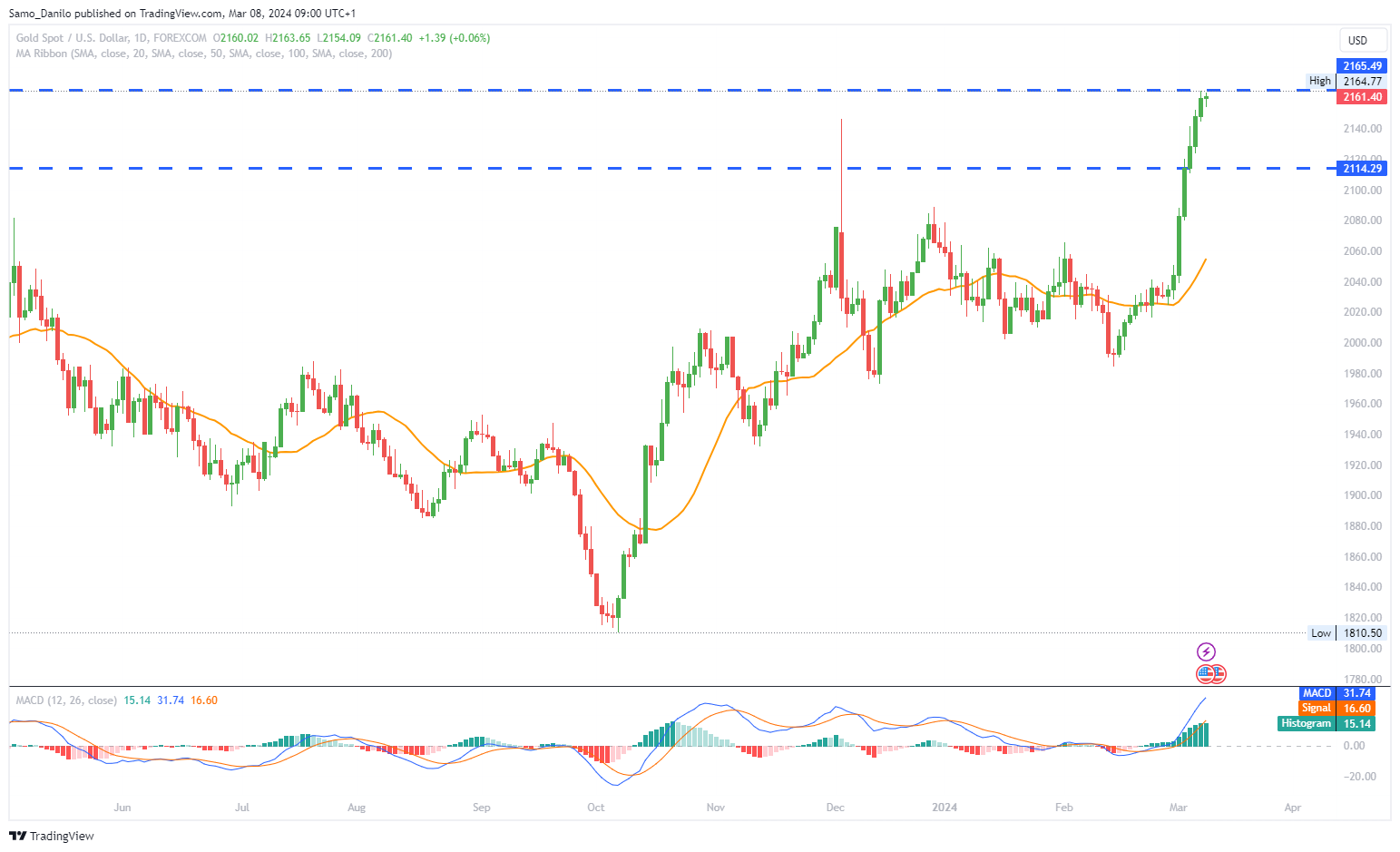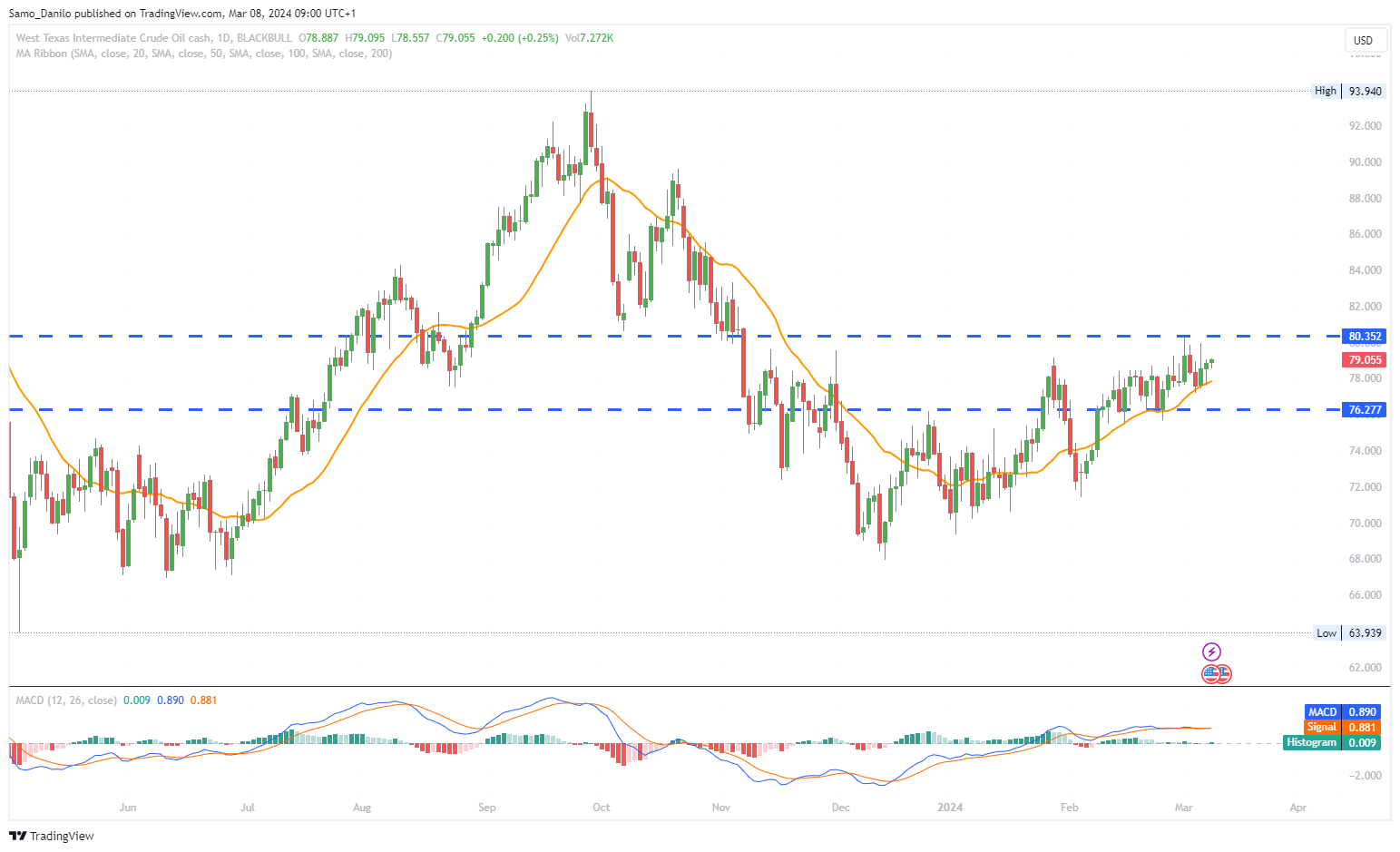EURUSD
- Breaking Crucial Threshold: The EUR/USD pair once again managed to break above the critical 1.0900 level, reaching multi-week highs. This ascent was propelled by increased selling pressure on the US Dollar (USD).
- Powell's Testimony Impact: Selling pressure on the USD intensified after Federal Reserve Chair Jerome Powell's testimony aligned with investor expectations. Additionally, disappointing US labor market readings contributed to the negative sentiment surrounding the Greenback.
- Powell's Rate Cut Hints: In his statement, Powell hinted at the possibility of interest rate reductions within the year. However, he emphasized that such measures would be implemented only when the Federal Reserve gains greater confidence in the trajectory of inflation returning to its targeted annual rate of 2%.
- ECB Growth Predictions: During the ECB event, the bank forecasted a 1.5% growth in the economy for 2025 and 1.6% for 2026, with consumption and investment acting as driving forces for this growth.
- President Lagarde's Press Conference: In her press conference, ECB President Lagarde noted a slowdown in demand for labor and highlighted elevated domestic price pressures. She also mentioned signs indicating a moderation in the growth of wages.
Closing statement: The EUR/USD pair's climb above 1.0900 was fuelled by USD weakness following Powell's testimony and disappointing US labour market data. The ECB's growth projections and President Lagarde's commentary also played a role. Traders are closely monitoring central bank communications and economic indicators for further guidance on currency movements.
GBPUSD
- Continued Winning Streak: GBP/USD appears to sustain its winning streak that commenced on March 1, hovering around 1.2810 during the Asian session on Friday.
- Powell's Testimony Impact: Federal Reserve Chairman Jerome Powell presented the Monetary Policy Report and responded to questions before the Senate Banking Committee on Thursday. Powell suggested that interest rate cuts may not be too far off if inflation signals cooperate.
- BoE Interest Rate Expectations: Financial markets are anticipating the Bank of England (BoE) to lower interest rates following the Federal Reserve. There is an expectation that the BoE might initiate easing measures in the August meeting. However, BoE policymakers are inclined to wait for more evidence of inflation trends before making any decisions.
- Key Economic Data Ahead: Traders are attentive to upcoming economic events, particularly the release of US February Nonfarm Payrolls, Unemployment Rate, and Average Hourly Earnings scheduled for Friday. These data points have the potential to induce volatility in the market.
| SMA (20) | Slightly Rising |
| |
| RSI (14) | Rising |
|
|
| MACD (12, 26, 9) | Rising |
|
|
Closing statement: GBP/USD's ongoing winning streak is influenced by Powell's testimony indicating potential interest rate cuts. Market expectations for BoE easing after the Fed and the upcoming US economic data release on Friday are contributing factors. Traders are keenly observing central bank signals and economic indicators for insights into future currency movements.
GOLD
- Gold Price Momentum: Gold price is gaining momentum around $2,165, showing a 0.12% increase on the day. This surge is attributed to a softer US Dollar, dovish comments from central bank policymakers, and safe-haven flows.
- Dovish Fed Comments: Fed Chair Jerome Powell mentioned that the US central bank is "not far" from gaining enough confidence that inflation will reach its 2% target, signaling a potential lowering of interest rates.
- ECB Policy Considerations: European Central Bank (ECB) President Christine Lagarde indicated that the ECB may ease policy in its June meeting. Such signals contribute to the overall sentiment favoring precious metals.
- Chinese Investors' Interest: Chinese investors are turning to gold as a safe haven amid a tumble in the property sector and stock markets in China. This increased demand further supports gold prices.
- Upcoming US Nonfarm Payrolls (NFP): Investors are awaiting the release of the US Nonfarm Payrolls (NFP) data on Friday. The market expectation is an addition of 200,000 jobs to the US economy. This event is anticipated to provide fresh impetus and direction to gold prices.
| SMA (20) | Rising |
|
|
| RSI (14) | Rising |
|
|
| MACD (12, 26, 9) | Rising |
|
|
Closing statement: Gold is experiencing upward momentum driven by a combination of factors, including a weaker US Dollar, dovish central bank comments, and safe-haven demand. The focus now shifts to the US NFP data for potential market-moving insights and the continuation of gold's recent trend.
CRUDE OIL
- WTI Prices Edge Higher: WTI oil prices are edging higher, supported by a weaker US Dollar (USD) and the anticipation that the Federal Reserve (Fed) will lower interest rates later this year.
- Positive Chinese Import and Export Data: Thursday's release of Chinese Import and Export data for February surpassed expectations, signaling a positive indication of recovery in the world's second-largest economy. This positive economic data contributes to the upward movement in oil prices.
- Fed Chairman's Comments: Fed Chairman Jerome Powell, on Thursday, stated that interest rates have likely peaked and are expected to decrease this year, despite a generally cautious stance from the central bank. Powell's remarks impact market sentiment, including the energy sector.
- Smaller-than-Expected US Crude Oil Inventory: WTI prices are getting a boost from a smaller-than-expected increase in US crude oil inventory. The weekly EIA Crude Oil stockpiles report indicates that US commercial crude oil inventories rose by 1.367 million barrels per day (bpd) for the week ending March 1.
- Upcoming Economic Indicators: Oil traders are closely monitoring the revision of Eurozone Gross Domestic Product (GDP) for the fourth quarter. Additionally, attention is on the release of key US economic indicators, including Nonfarm Payrolls, Unemployment Rate, and Average Hourly Earnings for February, scheduled for Friday.
| SMA (20) | Rising |
|
|
| RSI (14) | Slightly Rising |
| |
| MACD (12, 26, 9) | Rising |
|
|
Closing statement: WTI oil prices are on the rise, driven by a combination of factors such as a weaker US Dollar, positive Chinese economic data, expectations of lower interest rates from the Fed, and a smaller-than-expected increase in US crude oil inventory. Market participants are awaiting upcoming economic indicators for further insights into the oil market's direction.
DAX
- German Factory Orders Decline: On Thursday, German factory orders unexpectedly plunged by 11.3% in January, reversing the previous month's surge of 12.0% in December. Although this had a limited impact on market risk sentiment and the DAX, it highlights volatility in economic indicators.
- ECB's Impact on DAX Stocks: Despite weak factory orders, demand for DAX-listed stocks increased, driven by the European Central Bank (ECB). Downward revisions to inflation and growth forecasts have fueled expectations of a June ECB rate cut. The ECB Staff forecasted a 2024 inflation rate of 2.3%, down from the previous estimate of 2.7%.
- ECB President's Comments: ECB President Christine Lagarde's remarks boosted market sentiment. She stated that market bets on the timeline for an ECB rate hike were more appropriate. The ECB, in its decision, opted to leave interest rates unchanged at 4.5%.
- Positive German Industrial Output: Germany's industrial sector returned to expansion in January, with industrial output rising by 1.0% month-over-month. This positive data suggests a rebound in the Eurozone's top economy.
- Upcoming Economic Indicators: Today's focus is on Eurozone GDP and employment change numbers for Q4. While revisions to preliminary figures can influence market risk sentiment, they are unlikely to significantly impact market expectations for a June ECB rate cut.
| SMA (20) | Rising |
|
|
| RSI (14) | Rising |
|
|
| MACD (12, 26, 9) | Rising |
|
|
Closing statement: The DAX is navigating through economic uncertainties, with German factory orders showing unexpected declines. However, the ECB's impact on DAX-listed stocks remains significant, with market participants closely monitoring central bank decisions and economic indicators for insights into the market's trajectory.




